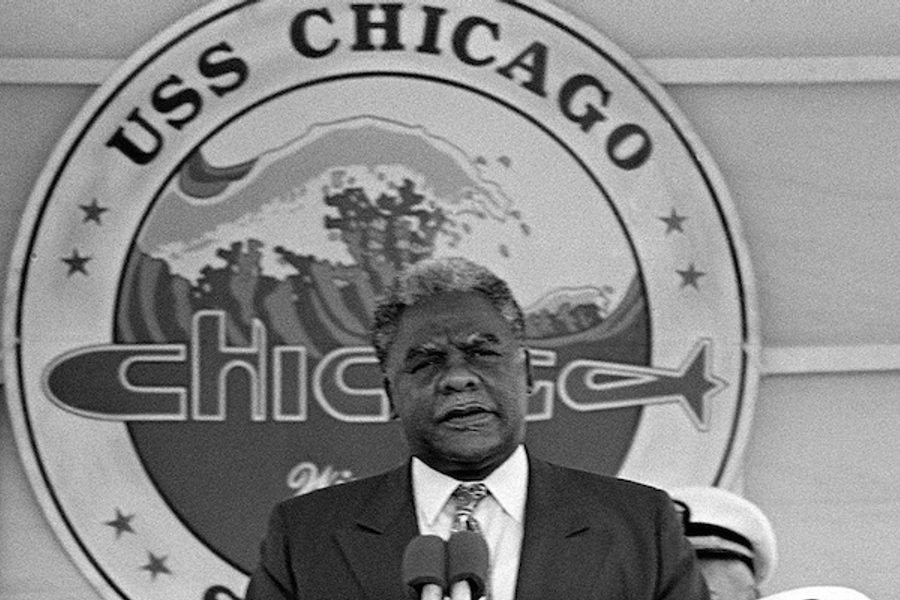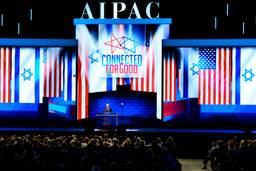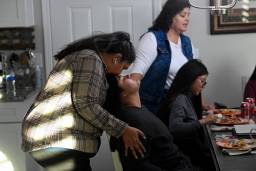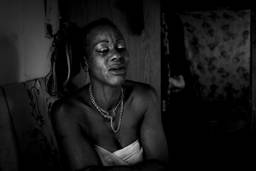Harold Washington and the Elephant in the Room
An untold tale of taking on the issue of race during the ’83 campaign.
Marilyn Katz and Bill Zimmerman

Thirty years ago, half of Chicago — 51.7 percent, to be exact—erupted with jubilation. After two previous unsuccessful runs and despite the most ardent efforts of many, Harold Washington was elected mayor. Although today many take the victory for granted, citing the dynamism of the man and the movement, only days before the election the contest hung in the balance, and many who were at the center of the campaign, we among them, believe that only a last-minute, bold confrontation with the city’s history of racism propelled Washington across the finish line.
Two months prior to the general election, counter to the predictions of political pundits, Washington had bested sitting Mayor Jayne Byrne and then State’s Attorney Richard M. Daley to win the Democratic nomination for Mayor of Chicago. His victory was built on the strength of the African-American vote organized by long-time veterans of the civil rights movement who had over the years had forged strong bonds with progressive Latinos, Asians and White liberals — a combination that provided Washington with the 37 percent of the vote he needed to win the primary.
Like most media commentators, we in the Washington campaign were confident that the general election would be <i>pro forma</i>, as had always been the case in Chicago when the successful Democratic nominee went up against a Republican in a general election. We were wrong.
Rather than unite behind Washington, the regular Democratic Party, led by its then-chairman ”Fast Eddie” Vrdolyak, threw its support to Bernard Epton, the little-known Republican candidate. Their not-so-subtle slogan was “Epton: Before It’s Too Late.”
To our dismay, the scarcely veiled racist appeal worked. Whereas immediately after the primary, both independent and internal polls showed Washington with a commanding lead, week by week the lead eroded as white voters responded to the message that it was ‘O.K.’ to vote your race.
Even in a city known for its segregation and racist history, we were surprised by the impact and vitriol. The low point came on Palm Sunday, March 27, 1983, when former Vice-President Walter Mondale and Washington visited St. Pascal’s Church in an all-white neighborhood on the city’s Northwest Side.
With no absence of irony, as the retinue of campaign staff and leaders walked to the church, onlookers and parishioners attacked them with stones, vicious shouts and racist jeers — a scene all too reminiscent of what Martin Luther King faced when he walked through Marquette Park in 1966. Mondale and Washington had to be escorted out by the police. A local CBS cameraman filmed the event, which featured an angry middle-aged white man repeatedly shouting “nigger lover” at Mondale. The footage was played and replayed on local and national news, becoming emblematic of the state of race relations in Chicago.
While the incident may have shocked the nation, it did not seem to move Chicago’s white voters — the erosion continued. Ten days before the election, we were still losing votes. We needed to do something dramatic if we were to win. We had to confront the elephant in the room.
Throughout the campaign, we had tread carefully around the issue of race — strongly appealing to and organizing the Black vote while studiously not raising race itself as an issue. Now, however, we, who were the media team, proposed creating hard-hitting television spots using the CBS footage of the St. Pascal incident to confront the issue directly. There was great nervousness — in fact outright opposition — about doing so, particularly among the campaign’s finance committee (who controlled the purse strings). The committee was comprised of older African-American businessmen who had successfully made their way in the city by consciously not confronting the issue of race directly. They feared the spots would create the kind of “backlash” that they had tried all their lives to avoid by being moderate in action if not thought.
However, finally with the tacit (albeit less-than-enthusiastic) support of the campaign manager and strong support from African American field leaders like Jacky Grimshaw, we were allowed to make two simple but powerful TV spots — although whether we would be allowed to air them remained in doubt. The first, “Pledge”, showed a racially diverse group of children reciting the Pledge of Allegiance, their innocent faces interspersed with footage of the St. Pascal’s mob hurling racial epithets. The screen then fades to black, with a tiny picture of Harold Washington and the slogan “Harold Washington for Mayor,” while the announcer intones, “When you vote on Tuesday, make sure it’s a vote you can be proud of.”
We put “Pledge” on the air eight days before the election. It appeared to have worked. Two days later, tracking polls revealed that Washington’s slide had stopped. The next day’s numbers showed a slight increase in his support, but still not enough to win.
With only three days left and internal polls still showing us three to five points down, we were certain of the necessity of using the second, even more powerful spot, “Shame”.
“Shame” was a simple spot that opened with a series of iconic photographs — the Kennedy assassination, the My Lai massacre, the murder of Martin Luther King, the shootings at Kent State University followed by scenes of the St. Pascal’s mob. Over these powerful images an announcer simply says, “There are moments in our country’s history of which all Americans are thoroughly and profoundly ashamed. One of those moments may be happening now, here in Chicago.” The screen then faded to a picture of Harold Washington and the words “Harold Washington for Mayor,” while a voice intoned, “When you vote on Tuesday, make sure it’s a vote you can be proud of.”
We were all aware that the spot was a stretch — that even the most virulent racism in Chicago was not comparable to the murderous incidents portrayed. We also were aware, however, that if were to move even the small segment of white voters we needed to win, we needed to show something so dramatic that they would stop and think of the meaning and consequences of their actions.
Given these factors, our plan was to show “Shame” only once but at a time when virtually every potential voter would see it.
While it is hard for even those of us who were there to remember, in 1983 there were only five channels and no DVRS. By buying ads on all stations at a specific time one could reach all viewers. Taking advantage of this, without the finance committee’s knowledge we purchased a “roadblock” for the Sunday night before the election.
On April 10, 1983, “Shame” ran at 8:00 p.m. on every Chicago station and thus was seen by every person in Chicago watching television that night. Monday morning, many of the Finance Committee members were apoplectic. But on Tuesday Harold Washington won his quest to become mayor with 51.7 percent of the vote, including 19 percent of the white vote — and the rest, as they say, is history.
Did the spots make a difference? Going into the final weekend, Washington had 48 percent of the vote; on Tuesday he had gained nearly four points to ensure victory.
The campaign’s post-election polls confirmed what those of us who had fought to put the spots on had hoped for. The two spots played a large role in that final increase. They worked by confronting people with a deeper and broader view of what was happening, asking them to consider their actions in the light of history and offering a stark moral choice. Of this we are sure. They did not change all of the attitudes of the fearful white voters of Chicago, but did affect enough of them to provide the needed margin for victory.
Could this moment of collective moral examination be repeated today? Of this we are less sure.
Where once it took only four TV stations to reach every viewer in Chicago, today any particular hour’s viewing audience is fragmented among hundreds of station choices. And where there once were neutral commentators delivering the news, today most get their news in and from echo chambers of their own opinion, places that do not demand any rethinking of one’s position.
Once upon a time in Chicago, two television spots made a small but decisive contribution to history. We asked the people of Chicago to reject false advertising, racial prejudice and political manipulation and instead to rise up to support a new vision of the city. While the proportion was small, some responded and made the critical difference.
The story speaks of many things: Of the power of media, for good and for ill. Of the ability of people to change. And it speaks well of the people of Chicago, who together changed history and would do so again 25 years later when they launched and carried the first African-American to the presidency.

I hope you found this article important. Before you leave, I want to ask you to consider supporting our work with a donation. In These Times needs readers like you to help sustain our mission. We don’t depend on—or want—corporate advertising or deep-pocketed billionaires to fund our journalism. We’re supported by you, the reader, so we can focus on covering the issues that matter most to the progressive movement without fear or compromise.
Our work isn’t hidden behind a paywall because of people like you who support our journalism. We want to keep it that way. If you value the work we do and the movements we cover, please consider donating to In These Times.
Bill Zimmerman and Marilyn Katz were the media consultants to Harold Washington’s 1983 campaign.
Bill Zimmerman is president of Zimmerman & Markman, Inc., a California-based political consulting firm. He is the author, most recently, of Troublemaker: A Memoir from the Front Lines of the Sixties, Anchor Books, 2012.
Marilyn Katz is the founder and president of Chicago-based MK Communications. Learn more about Marilyn and read her other writing for In These Times here.



